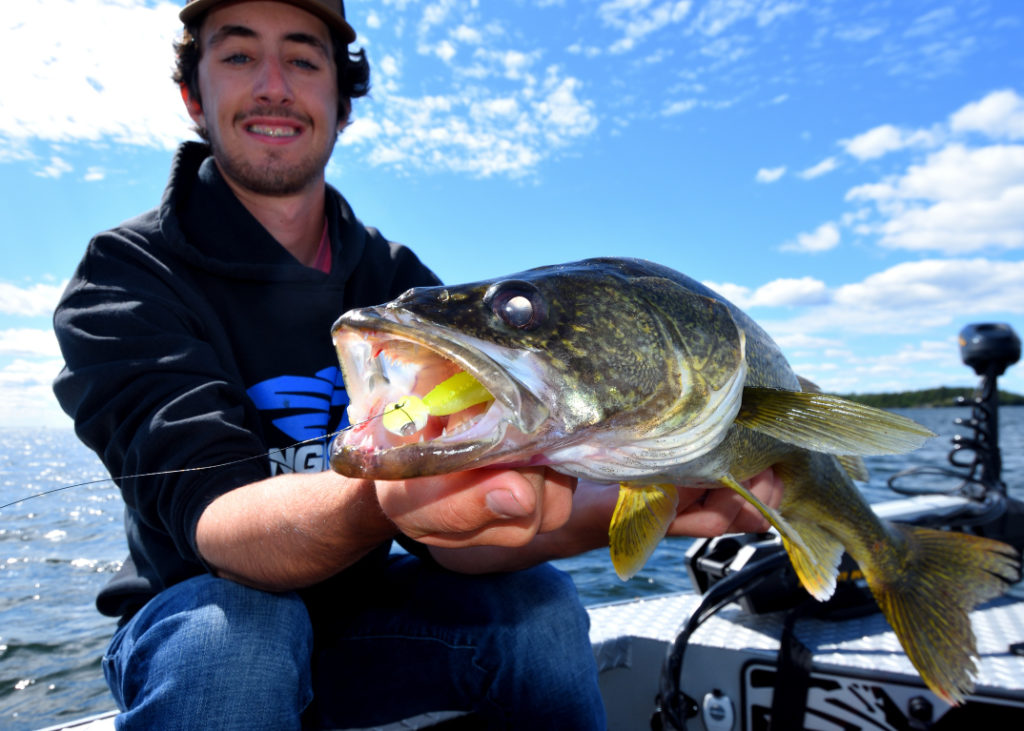How to find fall walleye
Look for depth and current, and you're on the right track
Advertisement
It’s time to visit the mailroom and answer a reader’s question, and it’s one I’m betting is on the minds of many anglers these days. Bruce wrote to me recently and said that he and his brother were headed to a northern Canadian Shield-type walleye lake. He said:
“It’s fairly large with many islands and current areas. It also has a lot of deep water with stair-step structure and drop-offs. Normally in the fall we catch 8- to 24-inch walleyes. But the lake holds a good population of bigger fish and that is what we would like to target. Fall slobs, if you know what I mean. Should we target main-lake deep-water structure? How deep? Live bait, minnows and jigs? Bottom bouncing with worm harness or slip bobbers? Input please.
Advertisement
Here’s my response: By the look of things, Bruce, you’ve been doing your homework. You’re definitely on the right track in terms of understanding fall walleye movements.
Deep water and current are two of the key major attractions for walleye in the fall. And of the two, I generally find that current areas are the most reliable. Sometimes the current is natural, like you’ll find in a flowage or a headwater lake. Often, however, it’s wind induced. Locate an area when the lake is necked-down or where there’s a long narrow channel between two islands, and you’ll often find plenty of walleye.
The other thing I should mention, and that I rarely see referenced when fall walleye locations are discussed, is that the trough or channel where you find the current should also offer some deep water holes or pockets. As a general rule, a channel with plenty of 25- to 40-foot deep water will usually be much better than the same necked-down area with only shallow depths.
Advertisement
As you also mentioned, deep water is another important draw in the fall. How deep? It’s relative. As a general rule, though, look for the deepest water in the general vicinity or portion of the lake that you’re fishing. I like to find at least 45 feet of water if it’s available, but feel better when I am fishing near 50-plus feet. That’s not to say you should be fishing in water that deep—just that it should be close by.
There’s one other important thing to keep in mind when fishing main lake structures lying adjacent to deep water: fish the portions of the structure that drop, or slope, most rapidly. This is quite different from the summer period when you’ll often find the fish relating to more gradual breaks, subtle slopes and drop-offs. In the fall, you will often find the walleye relating to the same structure, but they will have repositioned themselves to the sharper and faster -breaking slopes.
Advertisement
The ideal breaks offer stair-step ledges like you mention. If they don’t, check the very edge of the break, and the transition where the structure merges with the lake bottom.
All of the presentations you mention will work, but in rocky, cool, Shield-type waters, it’s hard to beat jigs and minnows in the fall. Especially good are large lively minnows, hooked lightly through the lips. As a general rule, bottom bouncers, spinners and crawlers are summertime techniques on these northern walleye lakes.
Finally, my all-time favourite fall presentation for targeting big, bold, bodacious brute walleye is casting 1/2- to 1-ounce Kalin Ultimate S jigs, tipped with five and six inch long soft plastic swimbaits (X-Zone Swammers, Mister Twister Sassy Shads and Storm 360 Minnows). The key is offering the big walleye a worthwhile meal.
Just remember to rig your swimbaits properly by skewering them onto the beefy jigs so that they are hanging perfectly straight. You’ll reduce their efficiency and effectiveness significantly—and hence the number of big walleye bites—if you rig them the least bit crooked, bent or humped over. A drop of super glue is good insurance to hold them in place.
You can’t go wrong, too, using a 7- to 7 1/2-foot long, moderately heavy-action spinning rod, teamed up with a 2500 or 3000-series reel spooled with a 14-pound test braided line like Sufix 832. I always add a two-foot long leader using 12- to 15-pound test Maxima Clear monofilament or fluorocarbon line, using back to back uni-knots.


